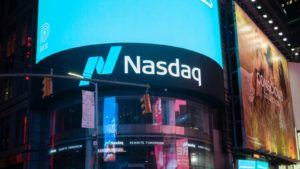If you’re looking for stocks to rebound, the relatively strong performance of the S&P 500 in 2023 is up nearly 19% year-to-date, so you won’t be able to find as many options as you once could.
A quick screen of the index’s stocks shows 25 at a new high and just two at a new low. I need three bounce-back stocks for this article, so I must broaden my search.
Per Finviz.com, 11 S&P 500 stocks are trading within 5% of their 52-week lows. That makes my life a little easier. However, of the 11, none are from the technology sector.
That’s not surprising.
Technology has the highest performance YTD of the 11 sectors in the index, with a 47.2% return through July 19. The worst-performing sector? Utilities and energy are tied at -6.1%. Neither is represented in the group of 11.
I have six sectors to choose from for my three bounce-back stock selections. Let’s look at communication services, financial, and consumer defensive/staples.
Walt Disney (DIS)

When Bob Iger handed over the reins as CEO of Walt Disney (NYSE:DIS) to Bob Chapek in February 2020, I’m confident he didn’t think he’d be trapped in the troubling situation he currently finds himself in.
Disney stock is trading within 3% of its 52-week low of $84.07. It’s down 16% over the past year and 22% over the past five years. By comparison, the S&P 500 is up 62% over the past five years.
Barron’s recently published an article discussing Disney’s six major problems, some of which weren’t Chapek’s creation but rather Iger himself. The most obvious is his push into streaming with Disney+.
Right now, Iger is facing a perfect storm. He’s in a hurry to deliver a profitable streaming platform — a 2024 projection for Disney+ making money — but the actors and writers strike means he won’t have a full slate of content to keep subscribers happy.
The article suggests that its assets might not be as valuable as Iger believes. For example, only value investors would consider taking a run at ABC. As for ESPN, it’s seeing the cost of content moving higher while the benefits of cable diminish daily. Even its theme parks appear ready to take a step backward. The cash cow of Disney — if that goes, Disney stock could soon be trading below $50.
So, why buy DIS stock?
If you look at Disney’s chart, it hasn’t consistently traded below $100 since 2014. Its business is much bigger today, and almost all of the issues are solvable, but it will take time. With Iger signed through 2026, he has time to figure things out.
The risk/reward proposition seems tilted in the investor’s favor for the first time in a long time.
Nasdaq (NDAQ)

Ironically, Nasdaq (NASDAQ:NDAQ) trades within 2% of its 52-week low when the Nasdaq Composite Index is up more than 36% YTD. I guess the company isn’t techie enough for investors.
Nasdaq reported Q2 2023 results on July 19. It managed to earn 71 cents a share in the quarter, 5 cents higher than the analyst estimate. On the top line, its revenue increased by 4% to $925 million.
Since Adena Friedman became CEO of the company in November 2016, she’s pushed it away from market-sensitive businesses, such as IPOs, to more tech-focused revenue streams.
For example, in the second quarter, Nasdaq acquired Adenza for $10.5 billion. Adenza makes risk management and regulatory software for banks and investment firms. It is Nasdaq’s largest acquisition in its history. Adena generates nearly $600 million in annual revenue.
Investors are likely worried that the company is overly leveraged relative to its historical norm. Friedman disagrees.
“We think we paid an appropriate price for an exceptional asset, but helping people understand how exceptional the opportunity is, I think, is going to take some time,” Friedman stated in June.
Getting further away from its transaction-focused roots will pay dividends down the road.
Campbell Soup (CPB)

It was either Campbell Soup (NYSE:CPB) or Conagra Brands (NYSE:CAG). I decided to go with the former because it had a higher free cash flow yield — 3.7% compared to 2.5% — and I’m addicted to soup of any kind.
On a more serious note, both companies haven’t done very well financially — or in the supermarkets — in recent years. CPB is down 17% in 2023, a little more than 2% over the past year, and up 13.7% in the past five years, 77% less than the S&P 500.
At the end of June, Barron’s contributor Al Root wrote a good piece about what’s wrong with the current markets using Ferrari (NYSE:RACE) and CPB as examples.
“Things are harder for Campbell because it is facing pressure from private labels, wrote Stifel analyst Matthew Smith in a June report. ‘Shares currently trade below 11 times using our calendar 2023 Ebitda estimate, a 15% discount to peers, which we believe appropriately balances the slower top line trajectory and risk volumes do not recover as pricing diminishes,’” Root wrote on June 30.
As Root points out, it trades at a 21% discount to the index.
Translation: By some valuation metrics, including market capitalization to earnings before interest, taxes, depreciation and amortization (EBITDA), it’s a value play right now. I say some because Campbell’s free cash flow yield of 3.7% is below what I consider fair value and a reasonable buy (4-8% is fair value, and above 8% is value territory).
However, as recently as 2020, its free cash flow was nearly $1.1 billion, nearly double the trailing 12 months. Further, its shareholder yield — dividend yield plus buyback yield — is 4.39%, the highest since 2017.
When its volumes turn positive as inflation subsides and consumers get more comfortable spending on brand-name products, its cash flow will accelerate.
On the date of publication, Will Ashworth did not have (either directly or indirectly) any positions in the securities mentioned in this article. The opinions expressed in this article are those of the writer, subject to the InvestorPlace.com Publishing Guidelines.
